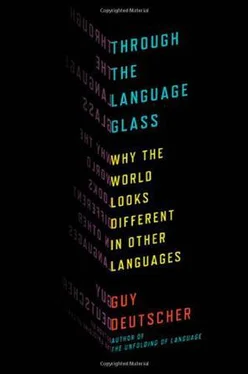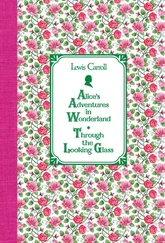What are we to make of Gladstone’s theory? The verdict of his contemporaries was unequivocal: his claims were almost universally scoffed at as the fantasies of overzealous literal-mindedness, and the oddities he had uncovered were unceremoniously brushed away as poetic license, or as proof of the legend of Homer’s blindness, or both. With the benefit of hindsight, however, the verdict is less black and white. On one level, Gladstone was so accurate and farsighted that it would be inadequate to class him as merely ahead of his time. Fairer would be to say that his analysis was so brilliant that substantial parts of it can stand almost without emendation as a summary of the state of the art today, 150 years later. But on another level, Gladstone was completely off course. He made one cardinal error in his presuppositions about the relation between language and perception, but in this he was far from alone. Indeed, philologists, anthropologists, and even natural scientists would need decades to free themselves from this error: underestimating the power of culture.
In the autumn of 1867, distinguished natural scientists from all over Germany convened in Frankfurt for the Assembly of German Naturalists and Physicians. The times they were exciting: the world in 1867 bore little resemblance to what it had been nine years earlier, when Gladstone published his Studies on Homer . For in the meantime, The Origin of Species had appeared and Darwinism had conquered the collective psyche. As George Bernard Shaw later wrote, “Everyone who had a mind to change changed it.” In those heady early days of the Darwinian revolution, the convened scientists would have been used to the airing of all kinds of peculiar notions about matters evolutionary. But the topic announced for the plenary lecture at the closing session of their conference must have seemed unusual even by the exacting standards of the time: “On the Color Sense in Primitive Times and its Evolution.” Even more unusual than the title was the identity of the young man who stood at the lectern, for the honor of addressing the final session of the conference fell to someone who was neither a natural scientist nor a physician, who was only in his thirties, and who was an Orthodox Jew.
In fact, very little was usual about the philologist Lazarus Geiger. He was born in 1829 to a distinguished Frankfurt family of rabbis and scholars. His uncle Abraham Geiger was the leading light in the Reform movement that transformed German Jewry in the nineteenth century. Lazarus did not share his uncle’s taste for religious modernization, but while in all matters practical he insisted on obeying the laws of his ancestral religion to the letter, in matters of the intellect his mind soared entirely unfettered and he entertained ideas far more daring than those of even his most liberal Jewish or Christian contemporaries. Indeed, his linguistic investigations convinced him-long before Darwin’s ideas became known-that he could trace in language evidence for the descent of man from a beastlike state.
Geiger possessed almost unparalleled erudition. As a seven-year-old boy, he declared to his mother that he would like to learn “all languages” one day, and in the course of his short life-he succumbed to heart disease at the age of forty-two-he managed to come closer to this ideal than perhaps anyone else. But what made him stand out as a thinker was the combination of this phenomenal learning with a seemingly inexhaustible stream of bold original theories, particularly on the development of language and the evolution of human reason. And it was on such an evolutionary theme that he addressed the men of science who gathered in his hometown in September 1867. His lecture started with a provocative question: “Has human sensation, has perception by the senses, a history? Did everything in the human sense organs thousands of years ago function exactly as it does now, or can we perhaps show that at some remote period these organs must have been partly incapable of their present performance?”
Geiger’s curiosity about the language of color had been piqued by Gladstone’s discoveries. While most contemporaries wrote off Gladstone’s claims about the rawness of Homer’s colors out of hand, Geiger was inspired by what he read to examine the color descriptions of ancient texts from other cultures. And what he discovered there bore uncanny resemblances to the oddities in Homer. Here, for instance, is how Geiger described the ancient Indian Vedic poems, in particular their treatment of the sky: “These hymns, of more than ten thousand lines, are brimming with descriptions of the heavens. Scarcely any subject is evoked more frequently. The sun and reddening dawn’s play of color, day and night, cloud and lightning, the air and the ether, all these are unfolded before us over and over again, in splendor and vivid fullness. But there is only one thing that no one would ever learn from those ancient songs who did not already know it, and that is that the sky is blue.” So it was not just Homer who seemed to be blue-blind, but the ancient Indian poets too. And so, it would appear, was Moses, or at least whoever wrote the Old Testament. It is no secret, says Geiger, that the heavens play a considerable role in the Bible, appearing as they do in the very first verse-“In the beginning God created the heavens and the earth”-and in hundreds of places after that. And yet, like Homeric Greek, biblical Hebrew does not have a word for “blue.” Other color depictions in the Old Testament also show deficiencies remarkably similar to those in the Homeric poems. Homer’s oxen are wine-colored-the Bible mentions a “red horse” and a “red heifer without spot.” Homer tells of faces “green with fear”-the prophet Jeremiah sees all faces “turned green” with panic. Homer raves about “green honey”-the Psalms rove not far away, on “the wings of a dove covered with silver, and her feathers with green gold.” [1]So whatever condition caused the deficiencies in Homer’s descriptions of color, it seems that the authors of the Indian Vedas and of the Bible must have had it too. In fact, the whole of humanity must have languished in that condition over the course of millennia, says Geiger, for the Icelandic sagas and even the Koran all bear similar traits.
But Geiger is only just beginning to gather momentum. Widening Gladstone’s circle of evidence, he now dives into the murky deep of etymology, an area that he had made entirely his own, navigating it with more confidence than perhaps anyone else at the time. He shows that the words for “blue” in modern European languages derive from two sources: the minority from words that earlier meant “green” and the majority from words that earlier meant “black.” The same coalescing of blue and black, he adds, can be seen in the etymology of “blue” in languages further afield, such as Chinese. This suggests that at an earlier period in the history of all these languages, “blue” was not yet recognized as a concept in its own right and was subsumed under either black or green.
Geiger proceeds to plumb successively deeper into the etymological past, to layers that lie beneath the pre-blue stage. Words for the color green, he argues, extend a little further back into antiquity than for blue, but then disappear as well. He posits an earlier period, before the pre-blue stage, when green was not yet recognized as a separate color from yellow. At an even earlier time, he suggests, not even “yellow” was what it seems to us, since words that later come to mean “yellow” had originated from words for reddish colors. In the pre-yellow period, he concludes, a “dualism of black and red clearly emerges as the most primitive stage of the color sense.” But even the red stage is not where it all starts, for Geiger claims that with the aid of etymology one can reach further back, to a time when “even black and red coalesced into the vague idea of something colored.” [2]
Читать дальше











